1. GENERAL OVERVIEW
| Reports - Turkish Report on Drugs and Organized Crime 2008 |
Drug Abuse
Narcotic Crimes
Turkish Report on Drugs and Organized Crime
NARCOTIC CRIMES
1. GENERAL OVERVIEW*
Turkey carried on her fight against illicit drug trafficking activities with an impetus in 2007. Turkey broke records in 2007 in her fight against not only the international illicit drug traffickers, but also the local trafficking organizations poisoning Turkish people.
The factors lie behind the success story of Turkey in her fight against illicit drug trafficking in all dimensions can be listed as follows:
• There is a crystal clear top level political will in the fight against illicit drug trafficking in Turkey,
• Units fighting against illicit drug trafficking are equipped with state of art technical infrastructure to increase the fighting capacity in line with the budget and technological developments.
• The personnel working in the Narcotics Units and devoted to the fight against illicit drug trafficking are subjected to special training programs at TADOC.
• Narcotic Units pay attention to planned/projected operations to dismantle the criminal organizations from bottom to top, rather than operations to seize illicit drugs.
• There is an efficient coordination between the law enforcement agencies.
• There is an impetus in international cooperation.
There is no single country which is not adversely affected by illicit drug trafficking problem in the world. Every country suffers from this problem at different levels. Some countries suffer froin trafficking activities, whereas some others suffer from being source or destination countries.
Turkey is located in between the source and destination countries and suffers from illicit drug trafficking as being a transit country.
For the last three years Turkey is named after her successful fight against the trafficking of Afghani origin opium and opiates to European countries, which corresponds 92% of the illicit opium production in the world.
The opium production in the world increased 43% and reached to 6610 tones, when compared with 2005 and 2006. In recent years heroin market is divided into three. It is determined that Afghani origin heroin is trafficked to neighboring countries and Europe. Heroin produced in South Eastern Asia is trafficked to China and Oceania. Latin America origin heroin is marketed to North America. Moreover very few amount of Afghani origin heroin is trafficked to North America over Africa and Europe.
Although it is stated that there is a horizontal progress in heroin consumption in the world, there are significant increases in heroin consumption in the countries located on the transit routes of heroin trafficking. It is recognized that heroin consumption is increased in Iran, Pakistan and Central Asia that are the neighbors to Afghanistan and in Russia, India and some regions of Africa. The heroin production in 2005 was 472 tones. It increased to 606 tones in 2006.
The opium produced in 2006 in Afghanistan was distributed to the region over Iran, Pakistan and Tajikistan in the following ratios respectively: 53%, 32% and 15%. For heroin and morphine it can be said that 48% of these illicit drugs were transported over Pakistan, 31% and 21% of the drugs were transported over Iran and Central Asia, respectively. In recent years some alternative routes reaching to Romania and Western Europe over Ukraine on the route starting from Afghanistan and destined to distribution centers in Westem Europe were identified.



As a result of cooperation between the law enforcement agencies of the USA, Iran and Ukraine in 2006 and 2007, four operations were organized in Ukraine against two separate criminal organizations planning to transport the illicit drugs produced in Iran to European countries over the Caspian Region. 506 kg of heroin were seized in the abovementioned four operations.
It seems that the Western Balkan Route which was significant between the years 2000 and 2004 has lost its popularity in 2005. The Western Balkan Route was replaced by the Eastern Balkan Route. The illicit drugs destined to Nordic and Baltic countries are trafficked over the Northern Black Sea Route starting from the Central Asia and passing over the CIS and Russian Federation. In 2005 and 2006 new heroin routes were also identified. New routes were emerged starting from Afghanistan and passing to Pakistan and China and from Central Asia to China directly. The new routes in question mitigated the effect of the routes from Myanmar to China.
The opiate seizures done in the world in 2005 were classified and evaluated as follows:
Opium (342 tones): 68% were seized in Iran, 27% were seized in Afghanistan and 2% were seized in Pakistan.
Heroin and Morphine (91 tones): Pakistan seized 27%, Iran seized 14%, China, Afghanistan and Turkey seized 10%, Russian Federation seized 5% and Tajikistan seized 3%.
Morphine (32 tones): 690/0 were seized in Pakistan, 22% were seized in Iran, 6% were seized in, and 2% were seized in Turkey.
Heroin (59 tones): China sized %15, Turkey seized 14%, Afghanistan seized 12%, Iran seized 10%, Russia, Tajikistan and the UK seized 8%, Pakistan seized 4%, the USA seized 3% and Italy seized 2%. This is a clear indication that China is the largest heroin market for East and South —East Asia and that Russia is the market for Eastern Europe, and that the UK and Italy are the markets for Western Europe and that the USA is the market for North America.
15,6 million people in the world use opiates. 11,1 million out of this total are heroin users. There is a horizontal tendency in heroin consumption in the Central and Western European countries. The number of illicit drugs users in this region is 1,4 million. The number of users in the Eastern European countries is higher. The total number of illicit drug users in Europe in general is 3,3 million. Asia continent consumes the highest amount of heroin in the world. The number of users in this continent is 5,4 million.
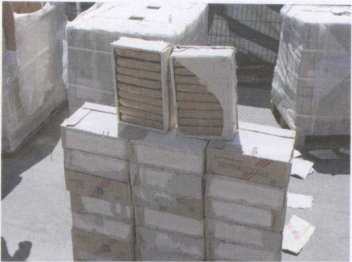
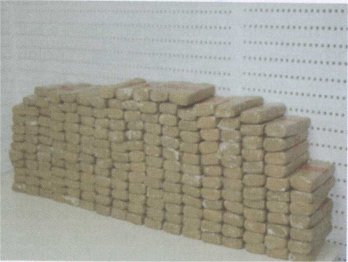
The illicit hashish market is by far the most common and the largest illicit drug market in the world. There are clandestine laboratories producing hashish in at least 172 countries in the world. Hashish in the form of powder is produced commonly in North Africa (Morocco) and Central-West Asia/Middle East (Afghanistan, Pakistan). Morocco served as a source country for Europe for years. However hashish production in Morocco decreased seriously in recent years. Morocco produced 3070 tones of hashish in 2003. This number declined to 1070 tones in 2005. In 2005 unprocessed hashish mostly seized in North America. Unprocessed hashish ranked the first among all the illicit drugs seized with the ratio of 66%. Africa ranked the second in unprocessed hashish seizures in the world with the ratio of 16%. When the seizures are evaluated in terms of processed hashish, Spain ranked the first in the world with the ratio of 52%. Morocco and Pakistan shared the second place with the ratio of 7%.
It is estimated that unprocessed hashish production in the world in the year 2005 has decreased to 42.000 tones. When compared with the yield of 2004, this figure corresponds to a 7% decrease with 3000 tones. Although the local hashish production in Europe is increased, hashish is generally exported to Europe. Moreover hashish is mostly produced in Albania and the Netherlands in Europe. Germany, Switzerland and the UK are the other European countries produce considerable amount of hashish.
The processed hashish production in the world is around 6.600 tones. As it is understood from this figure processed hashish is produced in a limited geography when compared to the unprocessed hashish production. North Africa, particularly Morocco produce processed hashish. In 2004 7.400 tones of processed hashish were produced. This number was decreased to 6.600 tones in 2005. This is a sign indicating the successful operations aiming to stop hemp plant cultivation in Morocco.
2005 shows a decrease in the seizure of both processed and unprocessed hashish, in comparison with 2004. In 2005 4.600 tones of unprocessed hashish and 1.300 tones of processed hashish were seized. Moreover hashish seizures corresponds to 57% of all the drugs seizures which corresponds to 1.5 million. Accordingly hashish is the most common drug trafficked in the world. The majority of the unprocessed hashish seizures are made in Mexico and the USA; whereas the majority of the processed hashish seizures are made in Spain, Morocco and Pakistan. The unprocessed hashish seizures are decreased in the ratio of 35%. Despite this decrease, unprocessed hashish is still the most common drug trafficked in the world. 165 countries report drug seizures. 148 of this 165 countries report that they seize unprocessed hashish.
It is determined that 160 million people in the world use hashish. This figure corresponds to 3.8% of the world's population. Accordingly hashish is the most common drug used in the world. As per the population density, hashish is mostly used in Oceania with the ratio of 15,8%. Oceania is followed by North America and Africa with the ratios of 10,7% and 7,7% respectively. Then finally comes Central and Western Europe with the ratio of 7,4%.
The world cocaine market shows a horizontal progress in terms of supply and demand. In 2005 cocaine was mostly seized in Columbia in the world. Cocaine is distributed to Europe from Caribbean and increasingly from Africa. In the year 2005 Spain, Portugal and the Netherlands made the largest cocaine seizures in Europe respectively.
The potential cocaine production in 2005 was 980 tones. 'This amount was recorded at the same level as 984 tones in 2006. The cocaine seizures in Europe corresponded to 3% of the total cocaine seizures made in the world in 1980. This figure was increased to 8% in 2000 and to 14% in 2005. The data indicate that there is a growing cocaine flow towards Europe and an increased cocaine use accordingly. Although there is an increase in the number of countries seizing cocaine every year, 72% of the total cocaine seizures in the world are made by only five countries. These countries are Columbia, the USA, Venezuela, Spain and Equator, respectively.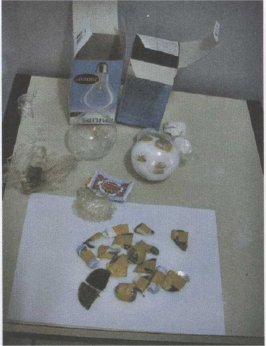

There are two main cocaine routes. The first route starts from Columbia and reaches to North America, in other words to the USA. The other route starts from Columbia, Peru and Bolivia and reaches to Europe. Venezuela ranks the first in cocaine delivery to Europe. Then come Equator and Brazil. The street dealers in Europe trading cocaine are mainly from West African countries. In recent years West Africa is emerged as a new route used in the delivery of cocaine to Europe. In the year 2005 the cocaine seizures in Europe reached to 107 tones.
The increased amount of cocaine seizures in Europe neither increased the price for it, nor changed the purity thereof. This is an indicator showing that the fight against cocaine trafficking is intensified and that cocaine is widely and commonly used in Europe. Cocaine enters Europe from Spain. The long shoreline of Spain and the historical and language ties of Spain with Latin America are abused by the traffickers. In general cocaine is delivered from South America to West Europe directly. However it is reported that cocaine is also delivered to East Europe and Balkan countries. This actually raised concerns about a new cocaine route. However it can also be connoted that the -traffickers, trafficking heroin over the Balkan route, started to traffic cocaine as well. Cocaine shipment from West Africa to Europe is a very serious problem.
It is estimated that 14 million people in the world use cocaine. In the last decade cocaine consumption in Europe was increased 3 to 4 folds. However when compared to the North American data, cocaine use in Europe is lower. Particularly Spain, the UK and Italy reported significant increases in cocaine use.
Synthetic drugs market showed a horizontal progress in 2005 in terms of supply and demand in comparison to 2004. The synthetic drugs market is different from heroin, cocaine or hashish markets. This difference depends on some specific factors. The synthetic drugs are preferred by the youth. Such drugs are cheaper and produced in the places close to the consumers. The successful supply and demand reduction activities targeting the synthetic drugs in recent years prevented the spread of such drugs. Moreover the strict controls against precursor chemicals that are used in the production of drugs played an important role in this success as well.
Methamphetamines are mainly produced in South Eastern Asian countries such as China, Myanmar, and Philippines. Amphetamines are mainly produced in the European countries, such as the Netherlands and Poland. Methamphetamines and amphetamines are intensively produced in North America, particularly the USA. Europe is deemed as the ecstasy production center. However in recent years the production of ecstasy tablets was rapidly increased in North America and South Eastern Asia.
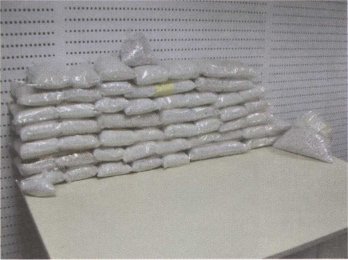
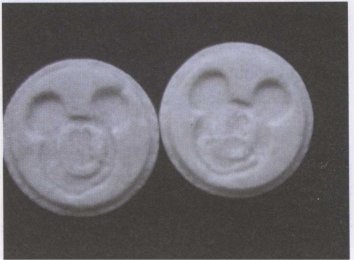
Most commonly seized synthetic drug in the world is the methamphetamine. Between the years 2000 and 2005 49% of the seized synthetic drugs were methamphetamines, 15% of them were amphetamines, 14% of them were ecstasy tablets and the rest 23% were unidentified drugs.
480 tones of synthetic drugs were produced in 2005. The breakdown is as follows: 80 tones of them were amphetamines, 290 tones of them methamphetamines, 110 tones of them were ecstasy tablets. When compared to the figures of 2004, methamphetamine and ecstasy production showed a slight decline, whereas amphetamine production showed a slight increase. The estimation about the synthetic drugs depends on three important factors. These three factors are as follows: the amount of seized synthetic drugs, the amount of seized precursor chemicals that are used to produce drugs and the number of synthetic drugs users.
In 2005 the largest amount of synthetic drugs were seized by China. The amount seized corresponds to 23% of the total seizures. China was followed by the USA and Saudi Arabia with the ratios of 18% and 8% respectively.
Saudi Arabia seized 111,5 million captagon tablets in 2005. The tablets seized in Saudi Arabia were produced typically East and South East Europe. Mainly such tablets are produced in Bulgaria and then delivered to the countries such as Syria, Jordan and Saudi Arabia.
The ecstasy seizures and the share of Europe showed a declining tendency in 2005. In 1995 ecstasy seizures in Central and West Europe corresponded to 78% of the world total. However this figure was decreased to 56% in 2004 and to 38% in 2005.
It is estimated that 9 million people in the world and 3 million people in Europe use ecstasy tablets. 90% of the ecstasy users in Europe live in the Western and Central European countries. Although there is a horizontal progress in terms of ecstasy use in the entire Western and some central European countries, slight decreases are also reported. Awareness raising activities targeting the youth about the harms of ecstasy use reached success and ecstasy use showed a decrease. The strict controls against precursor chemicals and the destruction of the clandestine laboratories can be counted as the other reasons behind this decline. Though there was a tendency of decline in the ecstasy use in the Central and Western European countries, increases in ecstasy use were also reported by the Southeastern and Eastern European countries for the year 2005.
• This part is compiled from the Turkish evaluations and information given in the World Drugs Report 2007 prepared by United Nations Office On Drugs And Crime (UNODC ).
| < Prev | Next > |
|---|












